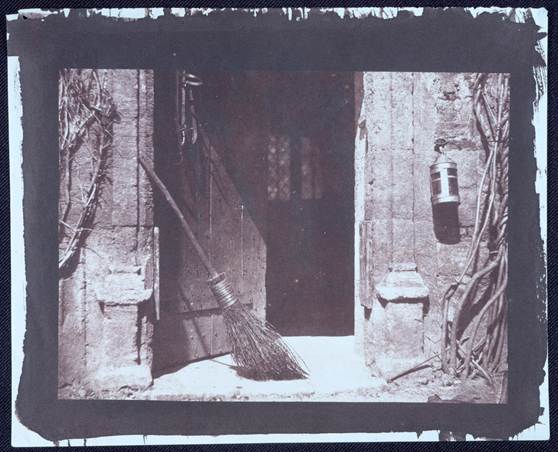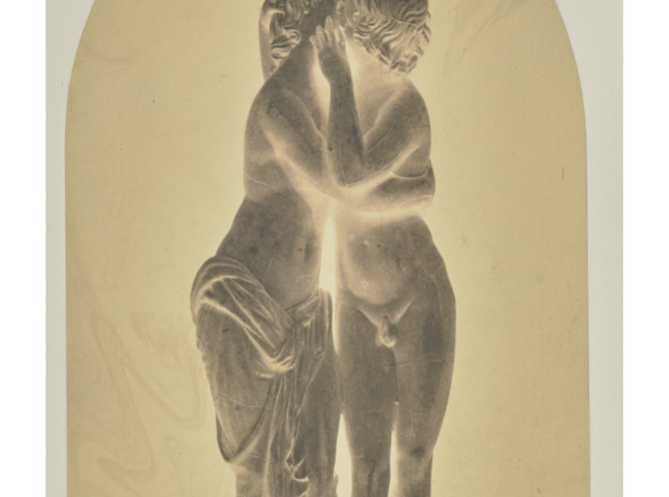In art and design, the artist’s primary aim is to make the audience interested and educated. Notably, actualizing this requires an individual to embrace critical thinking and present a variety of attractive photographs. Moreover, design, talent, and educational skills are prudent to enhance knowledge about what most viewers prefer to see. As a result, artists take the photos which the audience easily affiliates with, while the same addressees show less interest to other works of art. Therefore, I connect the strongest with William Henry Fox Talbot because of his “Pencil of Nature” photograph, whereas I relate least to Hippolyte Bayard because of the “Statue of a Couple Kissing” photo.
Artist That I Connect with the Strongest
As mentioned above, for an artist to be effective and present diverse photographs which the audience affiliates with, they must embrace critical thinking and develop the images which exemplify high creativity. I like William Henry Fox Talbot most because his pictures elucidate the history of humankind, hence making the present audience focus on the steps which the human race has made since creation. For instance, William presents an excellent “Pencil of Nature” photograph to the viewer, which leaves in me a critical understanding of the history of humankind and the subsequent technological evolutions. In the image, William shows the kind of lifestyle which people embraced in the sixteenth century (see fig. 1). Significantly, the picture illustrates this time to the viewers, and, indeed, dismantles and disperses the claims for the consistency and unity of knowledge.
The photograph displays a critical homestead environment, expressing how people lived in the past centuries and how time has changed the housing system. Arguably, if it were not for this and other related pictures, it could have been hard for the current generation to believe that people typically stayed in such devastating conditions. Distinctively, I like William Talbot most because he engages the audience, making them think about what life was in the 16th century and before. Moreover, I love the artist most because he explicates the extent to which technology has changed, leading to the betterment of people’s lives. He shows a wooden broom made of thin sticks, which people used to sweep their houses and compounds, in general, during the 16th century. He challenges the current population to embrace innovation to make work easier. Connectedly, I like William Fox Talbot most since he entertains the audience about the ancient life experiences and challenges the current generation to be innovative in society.
Symbolically, William uses the word ‘pencil’ to represent time and enhance people’s lives. As a pencil, whereby one can write and delete the information with others knowing, time equally shades everything that happened in the past, making it hard for the existing generation to believe in the actual occurrences and lifestyle. The same way sweepers clean the floor, making it clean, so does the time, considering that it is changing every practice and activity in society, making it more appealing and efficient. Therefore, I affiliate the strongest to William because he embraces creativity, incorporating symbolism to present his message.
Artist That I Hate Most
The worst artist is Hippolyte Bayard because of the “Statue of a Couple Kissing.” The artist presents a photograph appraising nudity, showing a man and a woman openly kissing (see fig. 2). Illustratively, the man is stripped, whereas the woman is half-naked. I disintegrate with this picture considering the fact that it is unethical. I believe that artists are supposed to be role models in society, whereby young people emulate their behaviors. However, in Hippolyte’s picture, there is nothing which a young person can copy apart from thinking about sexual relationships and the topics which need privacy. In other words, the artist imparts immoral knowledge to the audience. Thus, Hippolyte misleads the society, whereby, instead of love affairs being sacred, the artist makes the viewer see it as a normal matter which can be practiced anywhere and anytime, even by unmarried young people.
Hippolyte develops in the viewer’s mind a critical comprehension that love affairs are the topic which can be discussed openly without considering specific factors, including age. Arguably, we live in a generation, whereby most teens are sensitive to sexual matters due to the presence of the Internet. As a result, showing such photographs to this young group ignites their consent to find and discover more than just kissing. Finally, the individuals use the Internet to view nude pictures of people, developing the feelings to equally engage in the kissing act, which subsequently leads to teen pregnancies. Hence, I hate Hippolyte Bayard because he misleads the young generation to engage in early sexual affairs due to premature unethical discoveries.
In conclusion, it is paramount noting that art and design are all about the artist’s perspective and what they intend to impart to the audience’s mind. Photographers should be skeptical about the information which they present to the public. William Talbot is the personality who I affiliate the strongest with, because of his “Pencil of Nature work,” whereas Hippolyte Bayard’s presentation “Statue of a Couple Kissing” is the one which I hate. Above all, artists should do their best to understand the viewers’ needs and equally work towards enhancing ethics and morality among people in society, more so, the young generation.


Works Cited
Bischofberger, Bruno. Statue of Couple Kissing. 1984. The J. Paul Getty Museum, Los Angeles. Web.
Graham, Helen. The Co in Co-production: Museums, Community Participation and Science and Technology Studies. 2016. Science Museum Group Journal. Web.